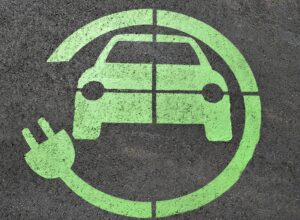
As gasoline prices continue to hover at stress-inducing high levels, people are increasingly rethinking their transportation options. Perhaps you are one of the growing number of drivers starting to seriously think about getting an electric vehicle. While concerns have typically centered on some combination of affordability, convenience, and environmental impact, the obstacles seem to be slowly abating. Here’s a brief look at how and why the pendulum of vehicle preference is beginning to swing away from gas-powered vehicles toward electric.
Rising interest in electric vehicles
In a 2021 poll for Forbes Wheels, nearly 23% of 33,000 U.S. drivers surveyed said they would consider purchasing an electric vehicle. Considering that EVs currently comprise only 3% of vehicles sold, this percentage represents a huge increase in interest.
Further, in early 2022, Consumer Reports found that more than 36% of respondents in its survey of more than 8,000 people (in a nationally representative sample of U.S. adults) plan to buy or lease an EV, or would consider doing so. These stats indicate that interest in EVs certainly does seem to be increasing. Finally, both studies found that interest in purchasing gas-powered vehicles is slowly starting to decline.
Common EV concerns
So, should you go out and get that EV? Here’s a brief look at the major concerns.
Is the investment worth it, weighing maintenance and repair costs?
The simplest answer is yes. But there are a couple of caveats. Experts point out that although EVs often have a higher price tag (for now), they have far fewer moving parts than traditional combustion engines. That means regular, routine maintenance is less expensive than gas-powered vehicles. And, they are less likely to break down as the vehicle ages. It also means that over the lifetime of the vehicle, total costs increasingly favor EVs over gas vehicles.
On the other hand, repairs after a crash are usually quite high, based on an analysis of recent insurance claims. But automotive-industry experts believe these costs will come down once EVs become more common and more auto shops become outfitted with the upgraded equipment needed to repair EVs. In the meantime, gas-powered cars are becoming ever more expensive to repair, as newer cars contain more and more expensive driver-assistance technology systems and sensors that need repairing or replacing after a crash.
Are there any financial incentives to purchasing an electric vehicle?
Yes. According to Consumer Reports, “for many EVs, the true purchase price may be even less than the sticker price because of federal, state, and even power utility incentives.” The Consumer Reports study also found that people are often unaware that most EVs are eligible for rebates and tax credits, including a federal income tax credit of up to $7,500.
How much will an EV impact my budget and daily routine?
Charging at home with a Level 2 (240-volt circuit) charger overnight (approx. 10-12 hours) costs approximately $10-$14 per charge (depending on electricity costs in your area), according to an analysis by JD Power. As you determine your overall cost, remember to account for the initial costs to purchase (approx. $550+) and install a charging unit at your home (you’ll need to add in any labor cost).
Charging at an external charging station means a faster charge (Level 3 or DC fast charger) and may take as little as one hour or less, but it costs more (approx. $20+ for a partial charge). Based on these cost estimates, you can see that charging your EV is less expensive than filling up with gas at the pump. Although charging involves a longer time investment, it’s usually possible to plan around the inconvenience.
Finally, the driving range on electric vehicles continues to improve, as batteries, technology and EV efficiency improve. Current EVs have estimated median ranges from 250-300 miles per charge. However, hauling heavy things and driving in extreme cold or heat can cut into that range and make it significantly shorter. The number of charging stations across the country also continues to increase, and is currently at approximately 50,000. You can use an online search tool from the Energy Efficiency and Renewable Energy Office of the U.S. Department of Energy to locate EV charging stations in the United States and Canada.
Do electric vehicles really have a positive impact on the environment?
Increasingly, yes. The rechargeable battery in your EV means no tailpipe emissions. A typical gas-powered vehicle emits 4.6 metric tons of carbon dioxide per year. Furthermore, “Greenhouse gas emissions from transportation account for about 27% of total U.S. greenhouse gas emissions, making it the largest contributor of U.S. greenhouse gas emissions,” according to the Environmental Protection Agency. Cutting tailpipe emissions is an effective way to reduce a major source of pollution. Additionally, although battery production creates its own pollution, recycling EV batteries helps reduce this pollution and battery life has been improving, with EV batteries now lasting from 10 to 20 years.
Is it more expensive to insure an EV?
Yes, currently it usually costs more to insure an electric vehicle because of the higher repair and replacement costs after a crash or other damage to the vehicle. However, it could be only a few hundred dollars more per year. And don’t forget about the financial incentives (mentioned above) to EV ownership. The insurance-cost disparity should come down as repair costs decrease, as noted above. Additionally, a few insurance carriers now offer discounts to insure electric and hybrid vehicles.
Looking past the sticker shock to get a clearer picture of the pluses and minuses of an electric vehicle, your perspective may change. Perhaps it makes sense to jump into the EV world now. Or maybe you wish to begin with a hybrid vehicle. Or, you may decide to stick with a gas-powered car for now. As you deliberate making the move to an EV, you can always reach out to your Bradish agent to help find the lowest rate to insure your vehicle. We’re here to help.
by Kris A. Mainellis